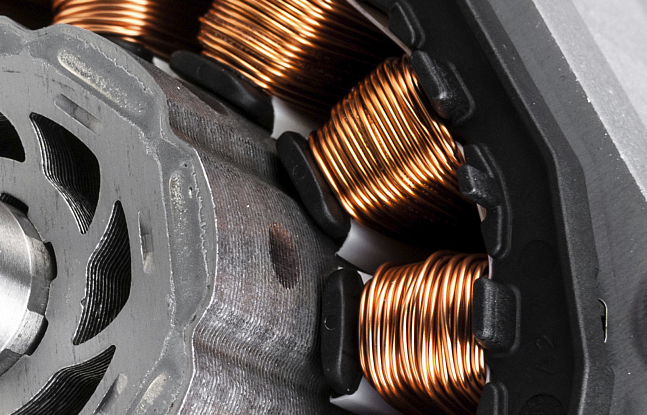In-depth analysis of the difference between DC brushless motor and PMSM
The brushless DC motor and the permanent magnet synchronous motor are generally similar in structure and control principle. The main difference between the products lies in the different air gap flux density waveforms and whether it is vector control or square wave control.
Usually, the rotor pole of DC brushless motor adopts tile-shaped magnetic steel. After the magnetic circuit design, the air-gap magnetic density of square wave can be obtained. The stator winding generally adopts concentrated whole-garden winding, so the induced back electromotive force is also a trapezoidal wave. The control of brushless DC motor requires position information feedback, and it must have a position sensor or use position sensorless estimation technology to form a self-controlled speed regulation system. When controlling, the current of each phase is also controlled as a square wave as much as possible, and the output voltage of the inverter can be controlled according to the PWM method of the brushed DC motor.
In essence, the brushless DC motor is also a permanent magnet synchronous motor, and the speed regulation actually belongs to the category of variable voltage and frequency conversion speed regulation.
 Permanent magnet brushless DC motor model selection
Permanent magnet brushless DC motor model selection
Generally speaking, the permanent magnet synchronous motor has a stator three-phase distributed winding and a permanent magnet rotor. The induced electromotive force waveform is guaranteed to be sinusoidal in the magnetic circuit structure and winding distribution, and the applied stator voltage and current should also be sinusoidal. The permanent magnet synchronous motor control system adopts self-control, generally adopts position sensor feedback information, and can adopt advanced control strategies of vector control (field oriented control) or direct torque control. Servo motor is an electromechanical product with high speed precision, high torque precision and quick response, which is improved on the basis of permanent magnet synchronous motor.
Generally, when designing a brushless DC motor, the air-gap magnetic field is a square wave (trapezoidal wave), so in the selection of the number of pole pairs, an integer slot concentrated winding is generally selected, such as 4 poles and 12 slots, and the magnetic steel is generally a concentric fan-shaped ring. Radial punch magnet. Install a Hall sensor to detect the position and speed. The driving method is generally a six-step square wave drive, which is used in occasions where the position requirement is not very high.
Permanent magnet synchronization is a sine wave air gap, the more sinusoidal the better, so choose fractional slot windings for the number of pole pairs, such as 4 poles with 15 slots, 10 poles with 12 slots, etc. The magnets are generally bread-shaped, magnetized in parallel, and the sensor is generally configured Incremental encoders, resolvers, absolute encoders, etc. The driving method adopts sine wave driving, such as FOC algorithm. Used in servo occasions.
It can be judged from the internal structure, sensor, driver, and application. This motor can also be used interchangeably, though at a loss of performance. For most permanent magnet motors with air gap waveforms in between, it mainly depends on the driving method.
 Structural advantages of permanent magnet synchronous motor
Structural advantages of permanent magnet synchronous motor
The speed of the permanent magnet brushless DC motor is adjusted and changed, and the permanent magnet synchronous motor needs to be controlled by a special driver.
Shandong Xinda Motor Co., Ltd. focuses on self-starting permanent magnet motor | permanent magnet synchronous motor | DC brushless motor | permanent magnet electric drive system design, customization, and manufacturer. We provide high-performance, high-efficiency self-starting permanent Magneto|Permanent magnet synchronous motor|Permanent magnet electric drive system motor products.



























 XINDA
XINDA